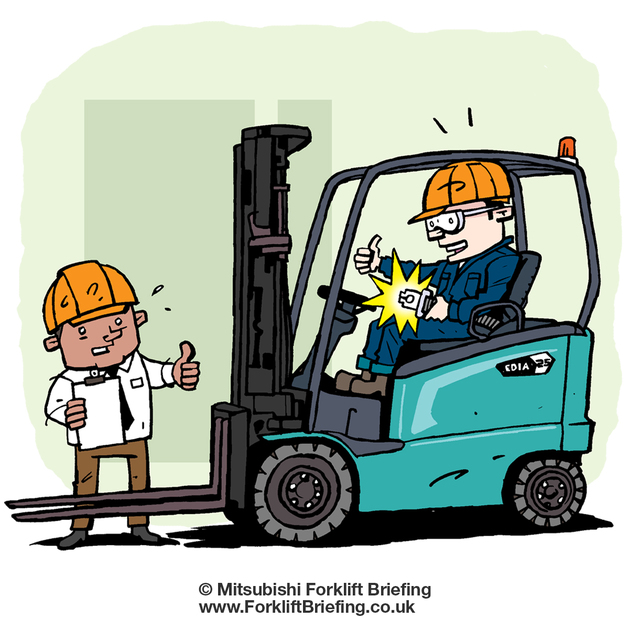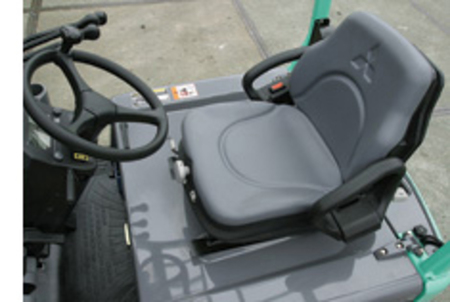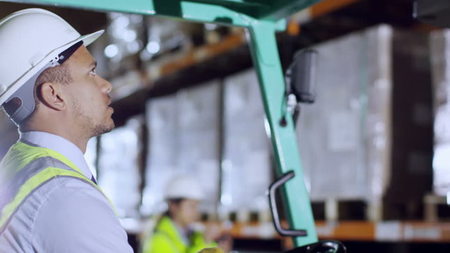
Tired of telling operators to belt up? (buckle up)
‘No-cheat’ innovation could prevent prosecutions
Throughout Europe, managers are required by law to ensure the safety of employees… and nowhere is this more important than in materials handling operations.
Failing to protect those working on and around a forklift can result in terrible injuries to workers, prosecution of the employer, huge fines, long-term reputational damage for the business... and insurance claims invalidated.
Each country will have its own legislation and enforcing body so it’s important that you check what applies in your particular location in order to stay on the right side of the law.
This could include procedures to ensure trucks are in safe working order: from daily, pre-use checks to mandatory inspections of the forks and lifting mechanisms (note: this is not the same as routine servicing). Appropriate training is an absolute must and consideration should also be given to operations specific to your site including those that make sure pedestrians are separated from working forklifts.
A good starting point is to carry out risk assessments appropriate to your application. The results will enable you to create a safe system of work (SSOW) which ensures all steps necessary for safe working have been anticipated and implemented. Designed to reduce human error, they prevent situations where workers attempt to cut corners or take unnecessary risks; the aim being to reduce the likelihood of accidents and, in the final analysis, minimising their consequences.
Minimising consequences
Accidents can’t always be avoided, but very often, quite simple precautions can make a massive difference in minimising the consequences.
Take tip-overs. Although the causes of these accidents are many, one simple precaution could save hundreds of lives every year: wearing a seatbelt.
The difference between life and death
It’s a chilling fact that tipping accidents are the single most common cause of deaths among forklift operators (42%*). In almost every case, the driver was ‘mousetrapped’ between the truck’s overhead guard and the ground, causing massive trauma to the head or upper body.
These accidents occur because, as a forklift tips, operators almost always attempt to jump clear: with fatal consequences. If they had been retained by a seatbelt they would have walked away with bruising and little more.
Overcoming obstacles
The solution sounds straightforward, but, as many managers will confirm, getting operators to buckle up can prove an insurmountable challenge especially in busy applications where operators wish to work fast or those that involve frequent on-off movements.
Some operators even attempt to over-ride safety system – to silence the warning alarm or for winning a few seconds- by fastening their seat belts permanently behind them. Fortunately, there is a solution that puts safety before convenience.
Simple 3-step solution
On its electric counterbalance trucks Mitsubishi Forklift Trucks has introduced a unique, “no-cheat” setting that allows managers to make certain seat belts are worn. Every time.
Once the setting has been selected the truck cannot be operated unless a simple, 3-step sequence is correctly completed.
- Sit on the seat (to activate the seat switch)
- Turn on the ignition (or do this after the next step)
- Fasten the seat belt (to activate the seat belt switch)
For more information on “no-cheat” seatbelt solutions contact your local Mitsubishi Forklift Trucks dealer.
*Figure from European Agency for Safety & Health at Work (EU-OSHA)
- Action points
- Where possible, avoid unbalanced loads and turning a corner when driving on a sloping surface
- Keep floors in good condition; fill in potholes and remove debris
- Create a ‘rules and regulations overview’ for your site and train all employees (especially new recruits) to understand what is expected
- Make sure trucks have a no-cheat seatbelt solution



